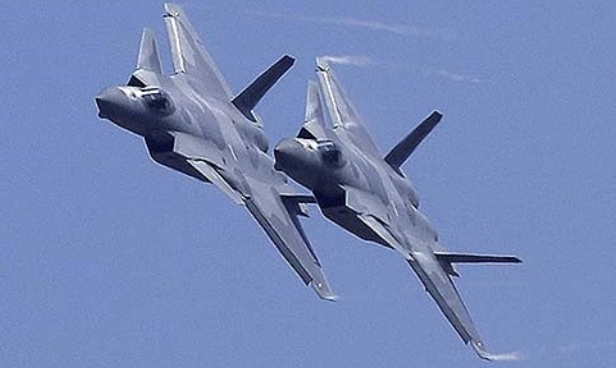Even After Doubling Their Fighter Jets In Tibet, PLAAF No Match For IAF

Both Chinese and Indian fighters can reach Tibet from airfields outside the region, but India has the advantage. The closest Chinese bases to the Indo Tibetan border are Kashgar, 560 km northwest of LAC, and Ngari Kunsha 320KM to the southeast. Then there is a military base in Hotan but it has very little space to support any thing over two squadron.
In fact Kashgar and Ngari Kunsha locations have even less apron space than Hotan. There are larger airbases in Xinjiang and in Tibet also but they are over 950 kms from the LAC. This means that even to defend the air space over occupied Aksai Chin and Tibet, it would strain China’s limited high altitude aerial combat capacity. Striking deep into Ladhak would be nearly out of Question.
However as per report, China has doubled its fighter jets on India’s disputed northern border, according to American analysts.
Earlier prior to Galwan clashes, China had just 12 xJ11 fighters at Hotan. Now satellites show 36 aircraft and helicopters at the Hotan air base in China’s Xinjiang region near Tibet and Ladakh. This includes 24 Russian-designed J-11 or J-16 Flanker fighters. In addition, there are now six older J-8 fighters, two Y-8G transports, two KJ-500 airborne early warning aircraft, two Mi-17 helicopters, plus a number of CH-4 strike/reconnaissance drones.
Chinese airpower in Tibet seems to be defensively focused on preventing the IAF from gaining air superiority. PLAAF has to protect Chinese ground troops from Indian fighters, as well as perform some reconnaissance missions and try and prevent Indian recon flights. While Chinese fighters could carry out a few odd strikes against Indian bases, theur weapon load will be too meagre for any meaningful damage. Also PLAAF contingent doesn’t appear oriented toward conducting air strikes on Indian troops, supply lines and infrastructure.
The focus of PLAAF, as per an American analysts does appear to be oriented towards counter-air missions. It aims to somehow prevent India from escalating the air dominance battle over the Tibetan skies.
China’s fighters now face a reinforced Indian Air Force over Tibet, including the newly arrived French-made Rafale fighters as well as advanced upgraded MiG-29K fighters. Experts assert that the Rafale is superior to all Chinese fighters, while Chinese media itself has downgraded the erstwhile 5th generation J-20 stealth fighter to just 4.5 generation.
China just cannot base p too many aircraft in Tibet, which would inevitably spur additional Indian reinforcements and risk a war that China does not want. Tensions escalated in June when Chinese and Indian troops engaged in several mass fistfights in the disputed Galwan River valley, resulting in 20 Indian deaths and reportedly more than 40 Chinese casualties. This was just not expected by the Chinese.




